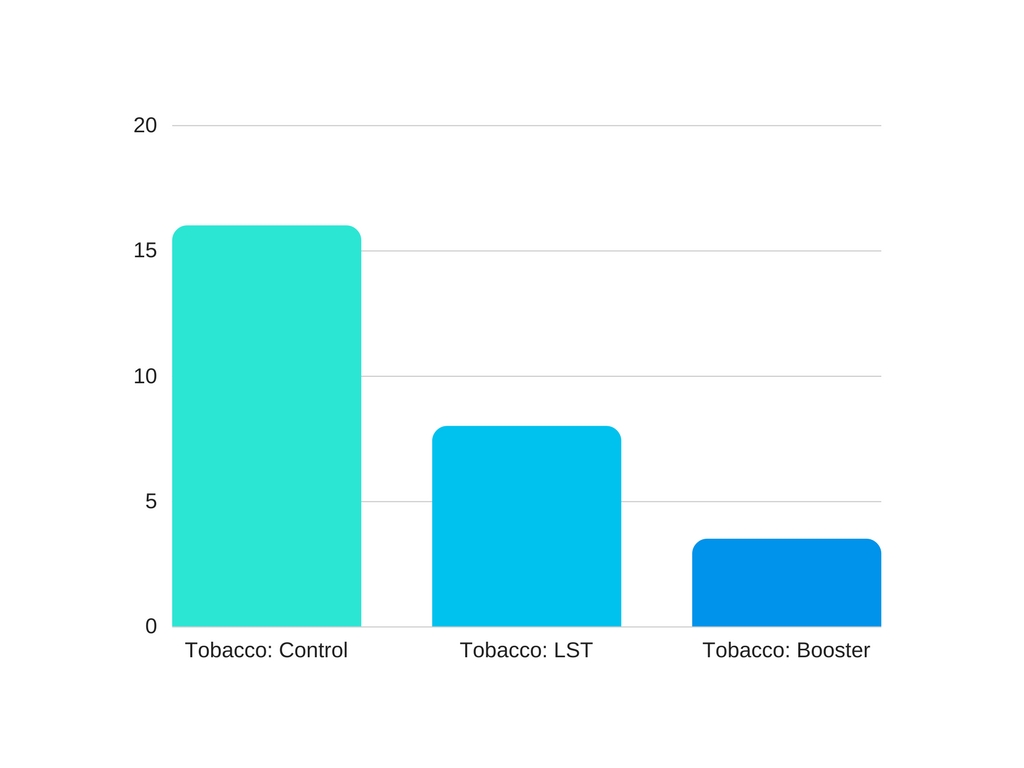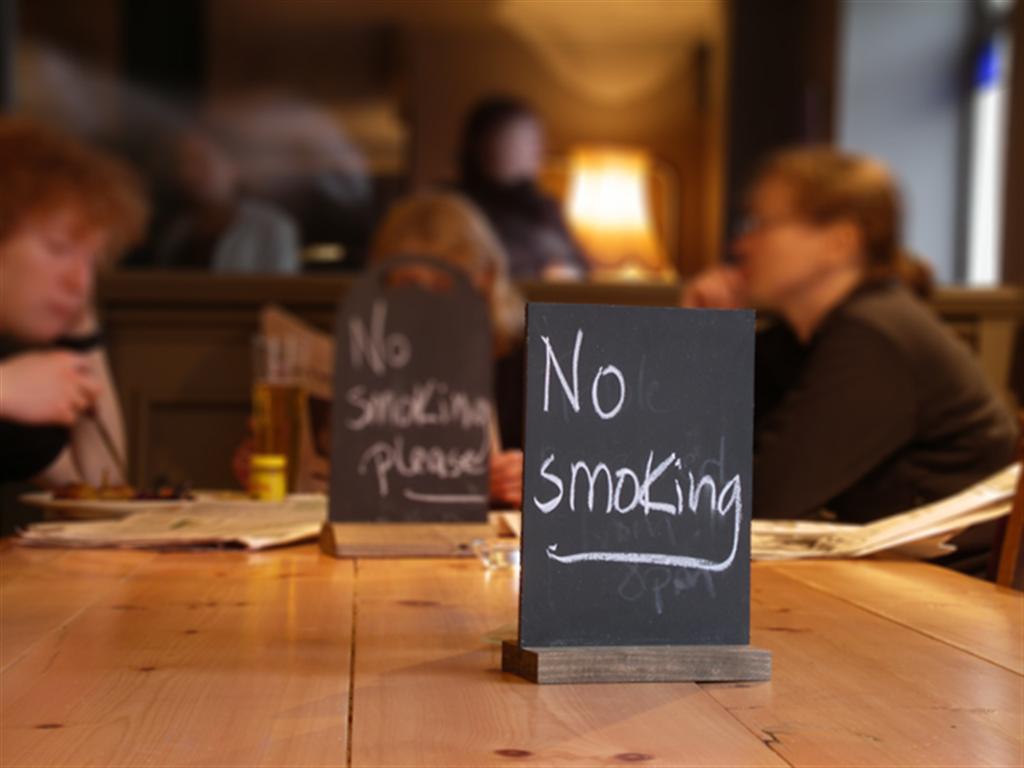Health promotion: Addiction
 A number of strategies have been adopted by governments all over the world to prevent smoking and its devastating consequences on health. Since the 1990s, most European countries have put either a ban or restrictions on advertising, but most of the world’s population is not protected by such restrictions. WHO wants a total ban on tobacco advertising, tobacco promotion, and tobacco sponsorship (e.g. of sports and music venues). Tobacco companies have always marketed their products where they can reach the youth audience, but they are now targeting adolescents in the developing world because it has become increasingly difficult to market their products in most western countries.
A number of strategies have been adopted by governments all over the world to prevent smoking and its devastating consequences on health. Since the 1990s, most European countries have put either a ban or restrictions on advertising, but most of the world’s population is not protected by such restrictions. WHO wants a total ban on tobacco advertising, tobacco promotion, and tobacco sponsorship (e.g. of sports and music venues). Tobacco companies have always marketed their products where they can reach the youth audience, but they are now targeting adolescents in the developing world because it has become increasingly difficult to market their products in most western countries.
On No Tobacco Day, 31 May 2008, WHO targeted children and adolescents in an attempt to prevent smoking. According to WHO figures, two out of three countries have no information about tobacco use, so people do not even know the dangers of smoking.
Most smokers start as teenagers. Consumer research has shown that tobacco advertising has a powerful effect on the smoking attitudes and behaviour of young people. This is partly because of the use of imagery and positive association, and partly due to the fact that young people are more brand-conscious than adults, and are therefore more likely to smoke the most popular and well-advertised products. Tobacco sponsorship also promotes brand association, which makes it easier to begin smoking.
Prevention strategies are designed to address potential problems in a target population before they start or become highly problematic. At first, it was thought that teens just didn't know the danger of drugs and alcohol. But attempts to educate young people did not make a significant difference. They knew that smoking was bad for them and smoked anyway. Prevention strategies then focused on scare tactics like the following video.
Even though you might think that this might make a difference, scare tactic approaches do not seem to work. According to the American National Institute for Drug Abuse, "research and experience have demonstrated that such ads are either counterproductive or ineffective; students learn better with a low fear appeal message and with a credible communicator. (1997)." When people see scare tactics, they often use defensive attribution in order to justify why bad things happen to others, but won't happen to them. For example, Yes, I drink. But I would never drive while drinking. Or, we don't have cancer in our family; I am at low risk, so I am no worried.
So, what are the strategies that work? Below you will find three strategies that are currently used to reduce substance abuse and addiction.
Social influence approaches: DARE
The Social Influence Approach (Evans, 1976) emphasizes the importance of social and psychological factors in promoting the onset of drug use. Adolescent drug use is seen as the result of social influences from peers and the media to smoke, drink alcoholic beverages, or use illicit drugs. An assumption of this approach is that teens begin to use drugs largely because they lack the confidence or skills to resist social influences to use drugs Special emphasis is often placed on teaching students to identify the techniques used by advertisers to influence consumer behavior. There are three components to social influence programs like D.A.R.E (Drug Abuse Resistance Education):
- Teaching people to recognize high-risk situations and to learn to exclude themselves from these situations.
- Increasing the awareness of media influences
- Refusal skills training - that is, learning how to say no.
One of the most famous campaigns based on this approach was sponsored by US first lady Nancy Reagan - the Just Say No campaign. Here is a PSA from the 1980s.
Research on the effectiveness of the program shows that groups showed a reduction of 30 - 45% in smoking compared to control groups. The effect, however, is short-lived, with most studies showing that the effect lasts less than two years - with only a few studies indicating that it may last up to five years (Flay et al, 1989).
The D.A.R.E. program in the USA is usually taught by local police officers to younger children - ages 10 - 12. Some studies have shown a short-term positive impact on drug-related attitudes, or behaviour. However, most studies that have used large samples, random assignment, and longitudinal follow-up have shown that DARE has little or no impact on drug use (Clayton, Cattarello, & Johnstone, 1996).
Competence enhancement: Life Skills Training
Botvin's Life Skills Training Progam is based on the concept of competence enhancement which emphasizes the development of positive social and personal self-management skills in order to prevent the initiation of drug use. Life skills training is an interactive course that focuses on cognitive factors, rather than social factors. Developing self-esteem and self-efficacy is a big part of the program, teaching students how to make decisions and set personal goals. In addition, stress and anxiety management - today often through mindfulness programs - is an integral part of the program.
Another aspect of this approach is normative education. Perkins & Berkowitz (1986) carried out a study of the student population at a private university in upstate New York. Their findings were that students generally believed the norm for the frequency and amount of drinking among peers was much higher than the actual norm or average level of consumption, and they believed their peers were much more permissive in personal attitude about substance use than was true. In addition, they found that when people go to parties, they tend to remember those that were "wasted" or "stoned", and do not remember the people who were not, thus believing that the behaviour is more common than it is. Perkins has argued that such misperception is likely to have substantial consequences on personal use. The strategy of the Life Skills Training Program is to communicate the truth about peer norms by drawing credible data from the student population that is the target.
How effective is this approach? Research shows a range of between a 40 - 80% reduction in tobacco and drug use (Botvin et al, 1984). However, like with the Social Influence Approach, it appears that the effect is not long-term. Therefore, a booster is given.
 The graph demonstrates the effect of a booster - that is, a short revision of the course. The first bar shows the percentage of students in a control group that are engaging in tobacco use on a weekly basis in grade 9. The second bar shows the percentage of students that have finished the LST program in grade 7 who are engaging in tobacco use on a weekly basis in grade 9. Finally, the last bar shows the percentage of students who finished the LST program in grade 7 and then have a five-session booster in grade 8 engaging in tobacco use on a weekly basis in grade 9. The results indicate that a booster has a significant effect in preventing drug use.
The graph demonstrates the effect of a booster - that is, a short revision of the course. The first bar shows the percentage of students in a control group that are engaging in tobacco use on a weekly basis in grade 9. The second bar shows the percentage of students that have finished the LST program in grade 7 who are engaging in tobacco use on a weekly basis in grade 9. Finally, the last bar shows the percentage of students who finished the LST program in grade 7 and then have a five-session booster in grade 8 engaging in tobacco use on a weekly basis in grade 9. The results indicate that a booster has a significant effect in preventing drug use.
The banning of smoking in public places
 One final strategy is to simply ban smoking in public spaces. Since often drug use like alcohol and smoking occurs in social settings, the argument is that if we ban smoking in restaurants, then teen smoking will decrease. But is this true?
One final strategy is to simply ban smoking in public spaces. Since often drug use like alcohol and smoking occurs in social settings, the argument is that if we ban smoking in restaurants, then teen smoking will decrease. But is this true?
Lemstra et al (2008) studied the effects of a smoking ban in McMurdo. The study found a decrease in the number of people who smoked. However, when looking at the percent decrease, it was only about 6%. It is clear that a smoking ban alone is not enough to change smoking behaviours.
A study by Siegel (2005) found that young people living in Massachusetts towns with strong restaurant smoking regulations had significantly lower odds of progressing to regular smoking compared to those living in towns with weak smoking regulations.
However, the research is inconsistent. In a meta-analysis by Callinan et al (2010) they reviewed 50 studies of smoking bans in the US and found no consistent evidence of a reduction in smoking prevalence attributable to the ban.
ATL: Communication
 In May 2017, the Czech Republic became one of the last states of Europe to ban smoking in restaurants and other public places. Currently, there is a group of parliamentarians who want to sue the government, arguing that the law is unconstitutional and needs to be revoked.
In May 2017, the Czech Republic became one of the last states of Europe to ban smoking in restaurants and other public places. Currently, there is a group of parliamentarians who want to sue the government, arguing that the law is unconstitutional and needs to be revoked.
Regardless of the constitutionality of the law, is the law a good move for the Czech Republic?
Based on your understanding of smoking bans and other research which you may find online, write a letter to the Czech government either in support of or challenging the anti-smoking legislation.
This activity asks students to think about the potential role of government in promoting health. The law was very hotly contested here in the Czech Republic, but the lawsuit failed.
Interestingly, prior to the passage of the law, the number of people smoking in restaurants and shown a steep decline. It was interesting to see that the Czechs were chosing not to smoke in restaurants without having to have a law. So, why was this step necessary?
One of the things that was really clear was that there was a socioeconomic divide. No one was smoking in the upper-class restaurants - but they were smoking in the village pubs. In addition, the problem is not just the rights of smokers, but also the rights of employees. People employed in smoky pubs were in an unsafe work environment, breathing in unhealthy air for eight to ten hours a day. It was the protection of these employees that was the basis for the government's argument to pass the law.
Issues in prevention research
There are several concerns when looking at prevention research. For example, much of the research in the US has been carried out on white, middle class, and private schools. Although there is some evidence that minorities also respond to these programs, there is a sampling bias to the research which makes it difficult to generalize.
It is often difficult to compare the different conditions in different schools or cultures. Most of the research uses cluster randomization - that is, whole schools are randomly allocated to the conditions. Schools can have very different populations and different environments - including access to drugs and attitudes toward drug use. The comparison between groups is problematic and open to participant variability.
Many of the studies are short-term and thus do not determine the long-term effects of the programs. Botvin has overseen several longitudinal studies, including one study where the seventh graders are now in their mid-thirties. However, these longitudinal studies have the problem of participant attrition - that is, people dropping out of the sample.
Finally, the studies are reliant on self-reported data. This means that the researchers have to trust that the participants are accurately reporting their own drug use. In addition, they have to make sure that ethical considerations are met and that all data is codified so that the surveys are anonymous.
Checking for understanding
1. Why do psychologists believe that "scare tactics" are ineffective in changing drug-related behaviour?
Scare tactics are rationalized by the viewers. Since they do not see people around them dying of tobacco use, they are able to believe that the chances are less than they really are. In addition, if someone does suffer from drug or alcohol use, the defensive attribution error may mean that they see that the behaviour of the individual led to their suffering and that they are someone different and will not suffer the same fate.
2. What is meant by "refusal skills training?"
Refusal skills training is role-playing that teaches students how to say no to drugs - or how to recognize a potentially dangerous situation and leave.
3. According to Perkins, why do university students often drink to excess?
Perkins argues that they mistakenly believe that the norm for drinking is much higher than it actually is. There is a memory bias, where students remember those that drank to excess more than those that drank in moderation or not at all. By believing that the norm is higher than it is, they then conform to the exaggerated norm.
4. How was Botvin able to show the effect of a booster on extending the effect of his Life Skills Training Progam?
He compared a control group that did not have the training with two other groups. One group that only had the training in grade 7 and another group that had the training in grade 7 and then a shorter version of the course again in grade 8. He then measured drug and tobacco use in grade 9. In his study, he used different schools - that is, a randomized cluster sample.
5. What is the problem with studies that show that a smoking ban led to a decrease in smoking behaviour?
These studies are correlational. It is not possible to rule out that other factors may account for the decrease in smoking behaviour. Especially since the decrease is relatively small, it is difficult to argue that there is a direct cause and effect relationship.
6. What is meant by cluster randomization?
Cluster randomization is when instead of randomly allocating individuals to different conditions, the researcher allocates entire groups to conditions. In this case, often entire schools are allocated to a condition.
7. How do ethical considerations affect our ability to gather credible data from prevention studies?
In order to increase the likelihood that self-reported data is honestly reported - and in order to protect the identities of the participants - the surveys are codified. This means that they are anonymous. This should increase the credibility of the data as individuals do not fear that their responses will be used against them.

 IB Docs (2) Team
IB Docs (2) Team
